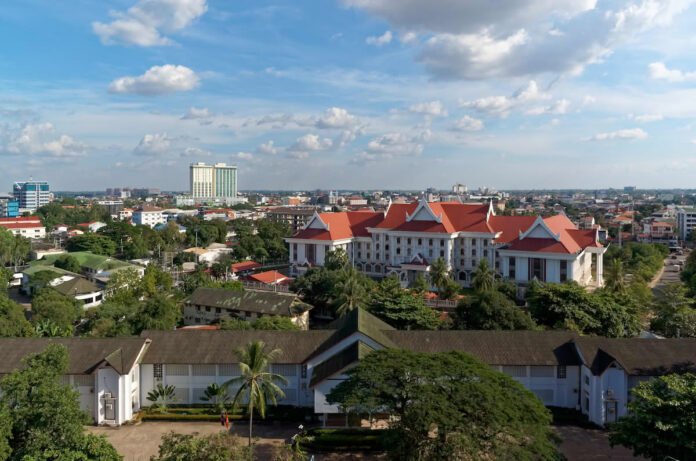Laos is actively working toward achieving Universal Health Coverage (UHC) through its evolving public health insurance system. At the same time, private health insurance has become increasingly vital, particularly for expatriates and citizens seeking higher standards of care or international medical access. Both public and private insurance systems serve essential but distinct roles in the Laotian healthcare landscape.
Public Health Insurance: Aiming for Universal Coverage
The core of Laos’ public healthcare system is the National Health Insurance (NHI), launched in 2016 and covering 17 provinces with the goal of achieving full nationwide coverage by 2025. This system integrates several older schemes, including the Social Security Organization (SSO) for private-sector employees and the State Authority for Social Security (SASS) for government workers. The Health Equity Funds (HEFs) and Community-Based Health Insurance (CBHI) have also been merged into NHI to enhance inclusivity.
Public insurance schemes offer basic and subsidized medical services, focusing on primary care, maternal health, vaccinations, and general inpatient/outpatient services. Funding is a mix of government subsidies and payroll contributions, depending on the scheme. For example, SSO is funded by employers (6%), employees (5.5%), and government (0.5%). While affordable, the public system struggles with infrastructure challenges, particularly in rural areas, including medication shortages and outdated facilities.
Private Health Insurance: Quality and International Access
Private health insurance in Laos fills a critical gap left by the public system. Companies such as LUMA Health, Allianz Insurance Laos, William Russell, Cigna Global, and AXA offer high-tier plans that provide access to advanced diagnostics, specialist care, maternity services, dental and vision, and even medical evacuation to Thailand or beyond—a crucial feature given the limited availability of complex treatments in Laos.
Plans from providers like LUMA offer annual coverage up to $1.6 million, while international insurers such as William Russell and Cigna specialize in global mobility and comprehensive expat care. These plans are open to individuals, families, and corporates and are often customizable, with lifetime renewability and direct billing networks including top facilities in Thailand.
Key Differences
- Coverage and Quality: Public insurance focuses on basic services and is limited in quality and reach, especially in rural areas. Private plans offer broader, higher-quality coverage with global options.
- Target Groups: Public insurance primarily serves citizens and residents through various schemes. Private insurance caters to expats, wealthier locals, and corporate clients.
- Financing Model: Public schemes are government-funded or contributory based on income, while private plans are premium-based with a wide pricing range based on services and risk.
- Flexibility: Public options are uniform and limited, while private insurance offers customizable plans, global access, and shorter wait times.
Key Similarities
- Both public and private systems aim to improve access to healthcare and financial protection.
- Both support inpatient and outpatient services, though quality and extent differ.
- Both are working toward digitalization and direct billing, though private insurers are ahead in this regard.
Top Public Health Insurance Schemes in Laos
Laos has made significant progress in expanding access to public healthcare services through a consolidated network of government-backed health insurance schemes. These schemes collectively aim to deliver Universal Health Coverage (UHC) by 2025. Although most public health insurance schemes in Laos are now integrated under the National Health Insurance (NHI) system, there are still some distinct programs serving specific population segments. Below are the top public health insurance schemes currently active in Laos, including their key features, cost structures, and levels of consumer satisfaction.
1. National Health Insurance (NHI)
Cost:
- Nominal co-payments apply per visit or admission (e.g., 5,000–10,000 LAK for outpatient care).
- Heavily subsidized by the government.
Available Services / Coverage Features:
- Basic inpatient and outpatient services, maternity care, immunizations, minor surgeries, and emergency treatment.
- Does not fully cover high-end diagnostics or specialist care.
Open for All or Limited:
- Open to the general population, especially informal sector workers, the self-employed, rural residents, and the poor.
- Currently covers 17 provinces; expansion to Vientiane Capital is still ongoing.
Core Financial Features:
- Funded through general taxation and household contributions in some cases.
- Designed to eliminate financial barriers to healthcare access.
Consumer Satisfaction Score:
- Moderate. Affordable and accessible, but many users report limited service quality, staff shortages, and outdated equipment, especially in rural areas.
2. Social Security Organization (SSO)(Official website: https://molsw.gov.la)
Cost:
- Employer contribution: 6%
- Employee contribution: 5.5%
- Government contribution: 0.5%
Available Services / Coverage Features:
- Covers medical consultations, hospitalization, surgery, paid sick leave, maternity, disability, and death benefits.
- Annual cap of 5 million LAK (approx. $540) per person.
Open for All or Limited:
- Limited to private sector employees and their dependents.
Core Financial Features:
- Mandatory payroll-based system with shared financial responsibility.
- Includes social protection benefits beyond healthcare.
Consumer Satisfaction Score:
- High among formal employees. Efficient processing and better healthcare access compared to general NHI, though specialist care limitations still apply.
3. State Authority for Social Security (SASS)
Cost:
- Fully funded by the government. No payroll deductions for employees.
Available Services / Coverage Features:
- Similar to SSO but with higher reimbursement caps and better access to facilities.
- Covers government employees, armed forces, and police.
Open for All or Limited:
- Limited to public sector workers, military personnel, and police officers.
Core Financial Features:
- Entirely state-funded. Offers better financial protection than other public schemes.
Consumer Satisfaction Score:
- High. Preferred among eligible employees for its extensive coverage and superior service access.
4. Health Equity Funds (HEFs)
Cost:
- Free for eligible individuals (the poor and vulnerable).
Available Services / Coverage Features:
- Full or partial subsidies for public healthcare services, including outpatient visits, maternity, and basic hospitalization.
- Supports transportation costs in some areas.
Open for All or Limited:
- Targeted exclusively at poor and marginalized populations.
Core Financial Features:
- Funded by government and donor agencies. Now integrated into NHI since 2019.
Consumer Satisfaction Score:
- Moderate to High. Highly valued by recipients, but availability and awareness vary by region.
5. Community-Based Health Insurance (CBHI)
Cost:
- Low-cost voluntary premiums, often under 20,000 LAK per year (~$2).
Available Services / Coverage Features:
- Basic primary care services at local health centers and district hospitals.
Open for All or Limited:
- Targeted at informal sector workers and rural communities.
Core Financial Features:
- Funded by member contributions and local government support.
- Now largely merged into the NHI framework.
Consumer Satisfaction Score:
- Moderate. Helpful in rural areas but limited in scope and reliant on community participation.
Top 5 Private Health Insurance Providers in Laos
While public health insurance in Laos focuses on affordability and coverage for basic healthcare needs, private health insurance is increasingly vital for expatriates, international travelers, corporate clients, and wealthier locals. These private insurers offer comprehensive medical services, access to international networks, and crucial benefits such as medical evacuation and specialized treatments unavailable in the country. Below are the top 5 private health insurance providers in Laos, including their features, costs, and customer satisfaction insights.
1. LUMA Health Insurance(Official website: https://www.lumahealth.com/health-insurance/laos)
Cost:
- Premiums range from $600 to over $5,000 USD per year, depending on coverage level, age, and geographic range.
Available Services / Coverage Features:
- Annual limits from $1,000,000 to $1,600,000.
- Inpatient and outpatient care, dental, vision, cancer treatment, maternity, chronic disease management, and medical evacuation.
- Lifetime renewal guarantee and 24/7 multilingual support.
Open for All or Limited:
- Open to both expatriates and local residents.
Core Financial Features:
- Fully private premium-funded model.
- Offers global and regional coverage with direct billing at partner hospitals in Laos and Thailand.
Consumer Satisfaction Score:
- High. Customers praise its transparency, digital claim process, and strong coverage across Southeast Asia.
2. Allianz Insurance Laos(Official website: https://www.azlaos.com/en_LA.html)
Cost:
- Mid to high-tier pricing; starts from $500/year, with higher rates for international or corporate plans.
Available Services / Coverage Features:
- Offers individual and group policies.
- Comprehensive hospital coverage, outpatient visits, surgical care, diagnostics, accident protection, and emergency helplines.
- Internationally recognized brand with regional medical partners.
Open for All or Limited:
- Available to individuals, families, and companies.
Core Financial Features:
- Backed by global reinsurance capacity.
- Strong financial solvency and risk management structure.
Consumer Satisfaction Score:
- Very High. Noted for reliability, ease of communication, and seamless hospital network access.
3. William Russell(Official website: https://www.william-russell.com)
Cost:
- Premiums range from $1,200 to $7,000 USD annually, based on plan tier and region.
- Offers four plan levels: Bronze, SilverLite, Silver, and Gold.
Available Services / Coverage Features:
- Coverage includes inpatient, outpatient, organ transplants, mental health, advanced diagnostics, cancer care, and repatriation.
- Direct billing in Laos, Thailand, and internationally.
Open for All or Limited:
- Open to expats, families, and globally mobile individuals.
Core Financial Features:
- Underwritten by Allianz, ensuring high financial stability and claim reliability.
Consumer Satisfaction Score:
- High. Known for customer support, plan flexibility, and global portability.
4. Cigna Global(Official website: https://www.cignaglobal.com)
Cost:
- Custom pricing based on personal and geographical profile.
- Entry-level plans begin at $800–$1,200/year, with premium plans exceeding $5,000.
Available Services / Coverage Features:
- Fully customizable modules (e.g., inpatient, outpatient, dental, vision, maternity, evacuation).
- 24/7 multilingual assistance and app-based claim submission.
Open for All or Limited:
- Designed primarily for expats and globally mobile individuals.
Core Financial Features:
- One of the most financially robust insurers globally, offering wide reinsurance and worldwide provider networks.
Consumer Satisfaction Score:
- Very High. Valued for flexibility, global reach, and customer service experience.
5. AXA Global Healthcare(Official website: https://www.axaglobalhealthcare.com)
Cost:
- Premiums typically start from $1,000/year, varying with age, location, and coverage scope.
Available Services / Coverage Features:
- Hospitalization, outpatient visits, chronic illness care, wellness checkups, and evacuation services.
- Access to extensive international hospital networks.
Open for All or Limited:
- Open to expats, travelers, and multinational employees.
Core Financial Features:
- Backed by AXA Group’s global financial capacity, offering high claims reliability and emergency service coverage.
Consumer Satisfaction Score:High. Frequently chosen for its extensive global partnerships and emergency readiness.
READ MORE: Private and public health insurance of Kuwait (Make informed choices)


